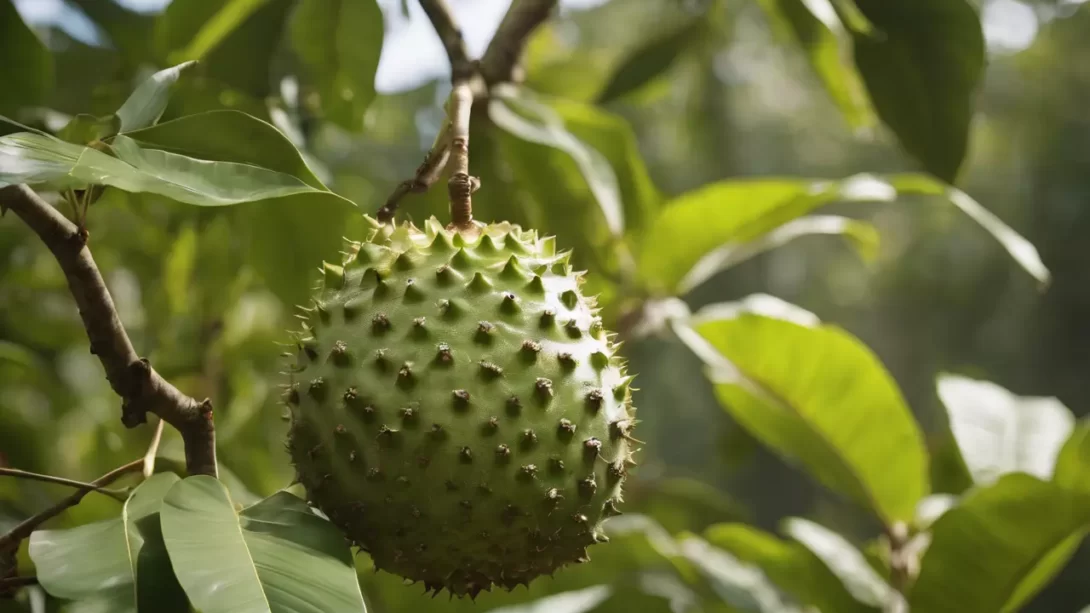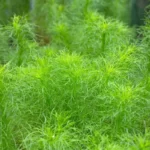Soursop, scientifically known as Annona muricata, is a tropical fruit renowned for its distinctive flavor, combining notes of strawberry, pineapple, and citrus with a creamy texture. This exotic fruit, also known as graviola or guanabana, is not just a culinary delight but is also valued for its medicinal properties, believed to offer various health benefits. Understanding when soursop is ripe is crucial for experiencing its optimal taste and nutritional value.
Native to the tropical regions of the Americas, soursop has gained popularity worldwide. Its unique taste makes it a favorite ingredient in juices, smoothies, and desserts, while its health benefits have been a subject of interest in traditional and modern medicine.
Soursop’s Growth and Maturation
The journey of a soursop from a flower to a ripe fruit is an intricate process. Soursop trees bear large, heart-shaped fruits with a spiky green exterior. The maturation process begins with flowering, followed by fruit set, and finally, fruit ripening.
After pollination, the fruit begins to develop, taking several months to fully mature. The growth and maturation period of soursop can vary depending on the climate and specific conditions of its environment, but generally, it spans from 4 to 5 months after flowering. Knowing the typical timeline for soursop maturation in your region can provide a rough guide for anticipating when the fruit might be ripe.
Signs of Ripe Soursop
Identifying a ripe soursop involves observing several physical characteristics. One of the primary indicators is a change in color. As soursop ripens, its spiky skin turns from a bright green to a slightly yellowish-green or even a more muted green. The fruit may also develop brown spots, which is a normal part of the ripening process.
Texture is another crucial factor. Ripe soursop is slightly soft to the touch, similar to a ripe avocado. The spikes on the skin, which are rigid when the fruit is unripe, become more pliable and yield to gentle pressure. However, if the fruit feels too mushy, it may be overripe.
Size can also be an indicator, although it can vary significantly depending on the variety. A general rule is that ripe soursop is usually larger and heavier than when it was unripe, indicating that the fruit is full of juice and ready to eat.
The aroma is a subtle but telling sign. As soursop ripens, it emits a sweet, fragrant smell. If you can detect a fruity, slightly citrus-like aroma from the stem end of the fruit, it’s likely ready to be enjoyed.
The Right Time to Harvest Soursop
Determining the best time to harvest soursop is essential for enjoying the fruit at its peak. Typically, soursop should be harvested when it’s still slightly firm but showing the aforementioned signs of ripeness – a change in color, a more yielding texture, and a sweet aroma. It’s important not to wait too long, as overripe soursop can become too soft and may lose its complex flavor profile.
Climate plays a significant role in the timing of the harvest. In tropical climates where soursop is native, the fruit can be harvested throughout the year. However, in regions with distinct seasons, the harvest usually aligns with the late summer or early fall. Gardeners should also consider local weather patterns, as excessive heat or humidity can accelerate the ripening process, while cooler temperatures might slow it down.
Post-Harvest Ripening of Soursop
Soursop continues to ripen after being harvested, which is an important factor to consider, especially if the fruit is picked when it’s still a bit firm. To ripen soursop post-harvest, leave it at room temperature, away from direct sunlight. This gradual ripening process can take a few days, and you can monitor the fruit’s progress by checking its softness and aroma.
It’s also possible to slow down the ripening process if you’re not ready to consume the fruit immediately. Placing unripe soursop in the refrigerator can extend its shelf life, but it’s best to bring it back to room temperature for final ripening before consumption.
Storing Ripe Soursop
Once soursop reaches its peak ripeness, it should be consumed or processed fairly quickly, as it doesn’t have a long shelf life. Ripe soursop can be stored in the refrigerator for a few days, which helps to preserve its flavor and prevent over-ripening. If you notice the skin becoming overly soft and the color turning more brown than green, these are signs that the fruit is past its prime and should be used immediately.
For longer storage, soursop can be frozen. The flesh can be scooped out, portioned, and stored in airtight containers or freezer bags. Frozen soursop is excellent for smoothies, sorbets, or as a tropical addition to various desserts.
Common Mistakes in Identifying Ripe Soursop
When determining the ripeness of soursop, a few common errors can lead to harvesting the fruit too early or too late. One mistake is focusing solely on size. While size can be an indicator, it is not always reliable, as some fruits may appear large but are not yet ripe internally.
Another error is waiting for the entire fruit to change color. While some yellowing or browning is normal, waiting for the entire fruit to change color can result in over-ripeness. Similarly, judging by the spikes alone can be misleading; they do soften but may not always indicate the internal ripeness accurately.
Harvesting too early can lead to a lack of flavor development, while waiting too long can cause the fruit to become overly soft and ferment, affecting both taste and texture negatively.
Using Ripe Soursop
Ripe soursop is incredibly versatile in the kitchen. Its creamy texture and unique flavor profile make it a popular ingredient in smoothies, juices, ice creams, and desserts. The flesh can be easily scooped out and used fresh, or it can be incorporated into recipes that call for a tropical, slightly tangy sweetness.
Soursop is also used in savory dishes in some cultures, often paired with spices or coconut milk to create exotic sauces and side dishes. Additionally, the leaves of the soursop tree are used for tea and are believed to have medicinal properties.
Tips for Preserving Soursop
For those looking to enjoy soursop beyond its fresh state, there are several preservation methods. Apart from freezing, soursop can be pureed and used in preserves, jams, or as a base for sauces. Dehydrating soursop flesh to make fruit leather is another option, offering a shelf-stable way to enjoy its flavor.
Conclusion
Identifying when soursop is ripe is key to enjoying this unique fruit to the fullest. By understanding the signs of ripeness and the common mistakes to avoid, you can ensure that you harvest and use soursop at its optimal state. Whether consumed fresh, incorporated into sweet or savory dishes, or preserved for later use, soursop offers a delightful taste experience and a host of potential health benefits. Embrace the exotic flavors of soursop and explore the various ways this tropical fruit can enhance your culinary adventures.




